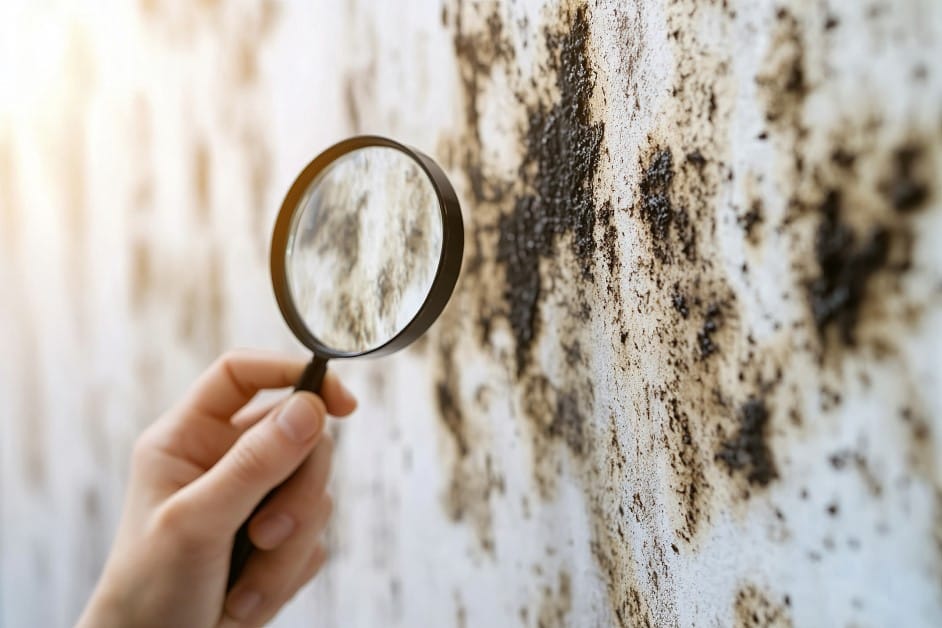
Where to Find Hidden Mold in the House and How to Detect It
Discover the common yet hidden spots where mold grows in your home. Learn the signs of hidden mold and what to do before it affects your health.
By:
The Good Home Daily
Posted on October 23, 2025
You’ve scrubbed the tiles, wiped down every piece of furniture, and opened the windows wide. Because everything looks spotless, you believe your home is free from hidden mold.
But is your home really as safe from mold as you think?
A University of Arizona study presented at the 60th annual meeting of the American Academy of Allergy, Asthma, and Immunology found mold in 100% of homes tested, often in spots people rarely check. It may be a foreign study, but homes in the Philippines could share the same fate.
With heat, frequent rainfall, and year-round humidity, our local climate creates the perfect conditions for mold to thrive quietly behind walls, under flooring, or inside air vents. When moisture is trapped, ventilation is poor, or leaks go unnoticed, mold can spread long before you see the first stain.
In this article, we’ll explore where to find mold in your home, especially in the spots that often go overlooked. We’ll also cover the signs of hidden mold, so you can take a closer look and see whether your home is truly as safe as it seems.
5 Signs Your House Has Hidden Mold

Not all mold is visible. In fact, most hidden mold in the house develops quietly, often long before you notice any visible spots.
To truly detect a hidden mold infestation, you must rely on more than just your eyes. Trust your sense of smell and touch, and pay close attention to your family’s health.
Here are some signs of hidden mold in your home:
1. The Persistent Musty Odor
One of the most common indicators of hidden mold is a persistent musty odor, especially in enclosed or damp spaces like bathrooms, closets, and basements. This pungent odor is created by Microbial Volatile Organic Compounds (mVOCs), which are gases released by the mold as it actively grows.
Even if you do not see visible spots, that smell is a clear sign of mold growth behind walls or under the flooring
2. Peeling Paint or Bubbling Walls
When moisture gets trapped behind painted surfaces, it breaks the bond between the paint and the wall.
Over time, this causes the paint to bubble, crack, or peel. And all of these are clear signs that dampness is present. The affected area might feel soft or uneven to the touch, hinting that something is happening beneath the surface.
Where there’s trapped moisture, mold often follows. It thrives in dark, enclosed spaces, feeding on the wall’s organic materials like paper backing or drywall.
3. Stains or Discoloration
Black, green, or brown spots on ceilings and walls are often the visible result of deeper mold growth.
Even light yellow stains can hint at past moisture problems, where dampness once seeped through the surface. And when moisture lingers or returns, mold can quickly develop again in those same spots.
These stains can be early warnings of a recurring moisture issue developing underneath.
4. Warped or Soft Surfaces
When mold grows behind walls or under flooring, it feeds on wood, paper, and glue-based materials. Over time, these materials absorb moisture and begin to warp, bulge, or feel soft to the touch.
A warped wall or uneven floorboard is more than a cosmetic problem—it often means moisture has already been sitting there for a while. And wherever there’s moisture, mold is never far behind.
5. Allergies That Flare Up Indoors
If you or your family experiences sneezing, itchy eyes, or a runny nose that seems worse when you’re at home, hidden mold might be the trigger.
Mold spores can irritate your immune system, causing mild allergic reactions that come and go. You might notice that symptoms ease when you leave the house, then return once you’re back indoors. That’s often a subtle but strong sign of mold exposure.
6. Persistent Respiratory Issues
When mold grows unchecked, it can also affect your breathing. Inhaling spores may lead to coughing, wheezing, or chest tightness, especially for people with asthma or sensitive lungs.
According to a review by the World Health Organization (WHO), mold can worsen the effects of asthma and disrupt the immune system. If you find it harder to breathe or experience recurring coughs at home, it could mean mold is already affecting your indoor air quality.
8 Common Places Where Hidden Mold Grows
If you’ve noticed one or more signs of hidden mold, it’s time to take a closer look. Mold often grows where you cannot see it, quietly spreading behind walls, under floors, or inside vents.
According to the Environmental Protection Agency (EPA), certain areas in homes are particularly prone to hidden mold, often overlooked during cleaning.
Here are the EPA-recommended locations to check for hidden mold:
1. The Underside of Carpets and Pads
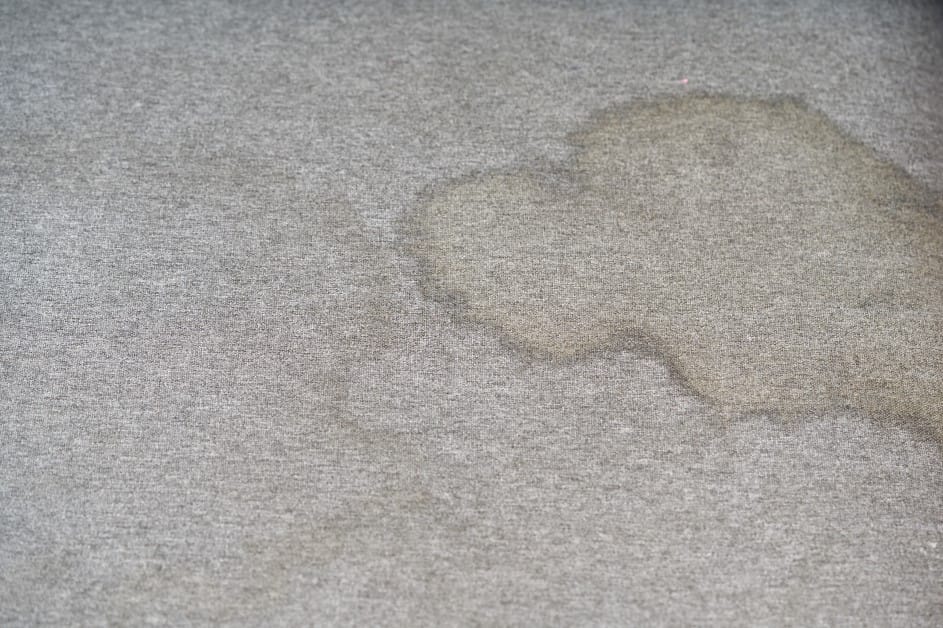
Carpets, area rugs, and their padding are common hidden mold hotspots. Moisture from spills, leaks, or even high humidity can get trapped underneath, creating the perfect environment for mold to grow.
Even if the carpet surface looks clean and dry, the underside may harbor mold that feeds on fibers and padding materials. Over time, this hidden growth can affect indoor air quality and produce musty odors without any visible signs on top.
Regular vacuuming alone isn’t enough to prevent this. Periodically lifting carpets or using moisture meters in damp areas can help detect mold before it spreads.
2. The Back Side of Drywall
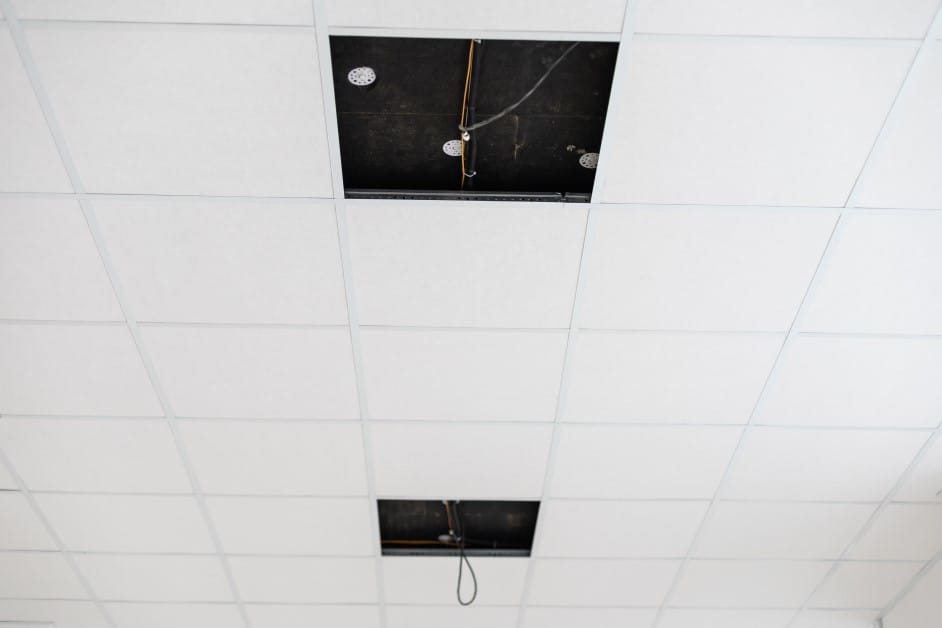
Moisture can seep through walls due to leaks, condensation, or high humidity, making the backside of drywall a perfect breeding ground for mold. Since this area is hidden from view, growth often goes unnoticed until it spreads to the front surface or causes a damp, musty smell indoors.
Drywall absorbs moisture easily, and without proper ventilation or quick repairs, the material can stay damp for long periods. Keeping your home’s humidity in check and promptly addressing any water leaks can help prevent mold from developing behind the walls.
3. The Top Side of Ceiling Tiles
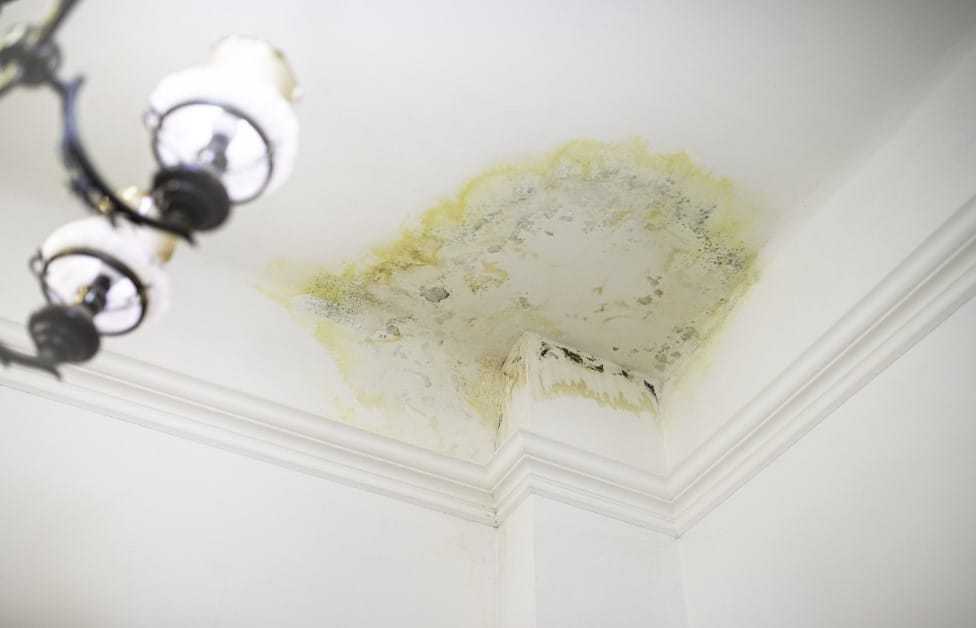
Ceiling tiles can hide mold above them, especially in areas with roof leaks, high humidity, or condensation from air conditioning.
Mold may grow silently on the top side of tiles or on the insulation above them, often going unnoticed until odors or water damage become apparent. Even tiles that appear clean and dry below can conceal extensive mold growth above.
Inspecting these hidden areas can be tricky. Removing a few tiles or using a moisture meter can help detect mold before it spreads further or affects the air circulating in your home.
4. Behind Wallpaper and Paneling
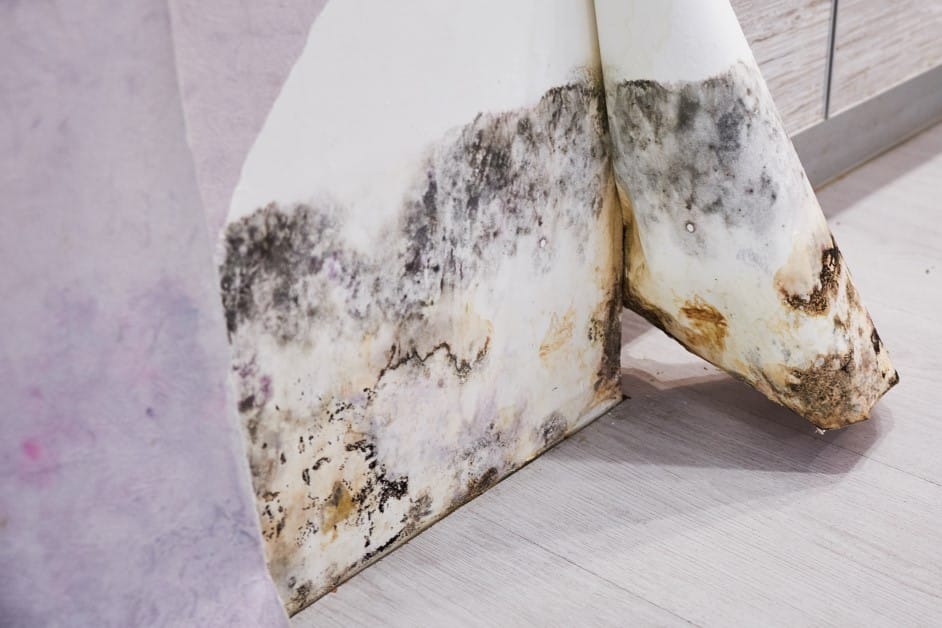
Moisture can get trapped between walls and decorative coverings like wallpaper or paneling. This creates a damp pocket where mold quietly grows out of sight.
Even if the surface looks clean, mold can feed on wallpaper adhesive or the organic materials in wood panels and plywood. If you notice peeling wallpaper, bubbles, or discoloration, it may be a sign that moisture is trapped behind the surface.
Gently checking the affected area or consulting a professional can confirm whether mold is the cause.
5. Damp Areas Behind Walls and in Crawl Spaces
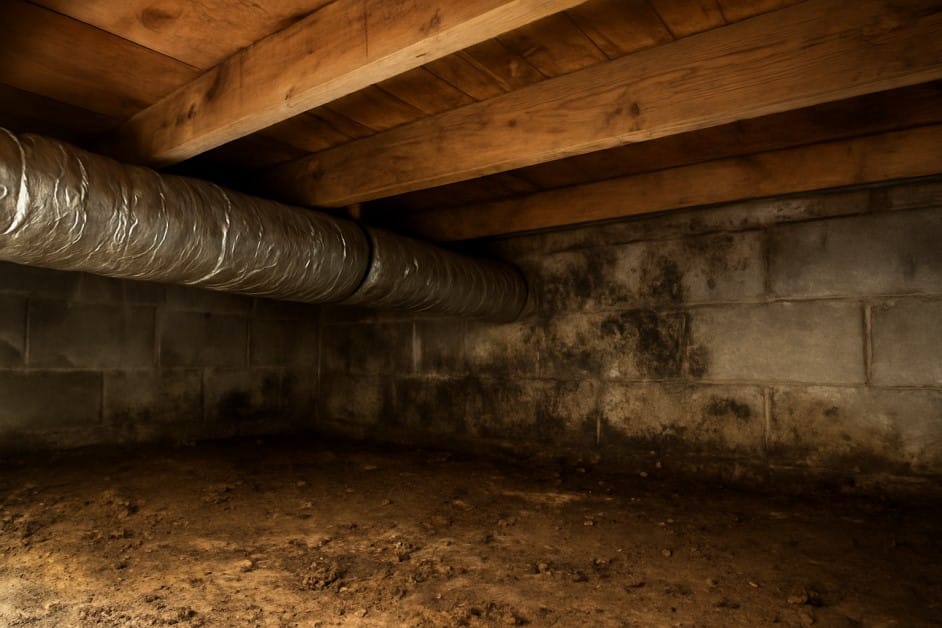
Moisture from leaking pipes, roof runoff, or poor drainage can build up behind walls or under floors without being noticed. These enclosed areas often lack ventilation, allowing humidity to linger and mold to thrive.
In crawlspaces, damp soil and limited airflow can cause similar problems. Mold here can easily spread upward into floors and walls, affecting the air quality in your home. Regular inspections and proper moisture control are key to keeping these hidden spots dry and mold-free.
6. Inside Pipe Chases and Utility Tunnels

These enclosed spaces often trap moisture from leaky or sweating pipes, creating the perfect hidden spot for mold growth. Because they’re tucked behind walls or ceilings, problems in these areas are rarely noticed until mold starts to spread or an odor becomes apparent.
Regularly checking for pipe leaks and insulating cold-water lines can help reduce condensation and keep these tight spaces dry.
7. On Acoustic Liners in Ventilation Ducts

Ventilation ducts can harbor mold when damp air builds up inside, especially on acoustic liners designed to absorb sound. When humidity levels rise or condensation forms, these liners can trap water or stay damp for long periods, giving mold a place to grow unnoticed.
Because air constantly moves through ducts, spores can easily spread throughout the home. Regular cleaning and proper ventilation help prevent buildup and keep indoor air quality healthy.
8. On Roof Materials Above Ceiling Tiles

Mold can also develop on roof materials just above ceiling tiles, especially when leaks go unnoticed. Even a small drip from damaged flashing or worn-out roofing can let water seep through and collect in the ceiling cavity.
Since this area is enclosed and rarely inspected, damp insulation or wood sheathing can become a hidden breeding ground for mold. Over time, it may spread to the tiles below, leaving faint stains or a musty smell as your only clue. Regular roof checks and prompt repair of any leaks can help keep these upper spaces dry and mold-free.
What to Do If You Find Hidden Mold
So, you’ve found hidden mold—what should you do next?
While it is easy to focus on wiping away the stains, removing mold without addressing what caused it will only make it return. The real solution lies in identifying and fixing what fuels its growth in the first place.
Regularly check for moisture, especially in spots that should be properly waterproofed.
Mold thrives where there’s moisture. Whether it comes from a leaky pipe, poor ventilation, or trapped humidity, these conditions create the perfect environment for spores to spread quietly. Read our guide on how to clean mold properly to make sure you are tackling it the right way.
In some cases, however, the problem runs deeper than what you can see or safely handle. Mold that spreads over 10 square feet often requires the help of certified mold remediators. Do not hesitate to call professionals. They have the tools and expertise to remove contaminated materials safely while preventing spores from spreading to other parts of your home.
Frequently Asked Questions About Hidden Mold
How do you detect hidden mold in your house?
Hidden mold can often be detected through musty odors, peeling paint, or unexplained allergy symptoms. To confirm its presence, check damp areas like behind drywall, under carpets, and inside air vents. A professional mold inspection can help if you suspect hidden growth but cannot locate it.
Can you smell hidden mold even if you cannot see it?
Yes. Hidden mold often produces a strong, musty smell caused by Microbial Volatile Organic Compounds (mVOCs). If you notice this odor even after cleaning, it is a sign that mold may be thriving behind walls or under flooring.
Should I clean hidden mold myself or call a professional?
For small mold patches (less than 10 square feet), you can clean them yourself using detergent and water. However, if the mold covers a larger area, keeps returning, or grows behind walls or ceilings, it is safer to call certified mold remediators to handle the cleanup properly.
If I use a dehumidifier, will that kill the mold?
A dehumidifier helps prevent mold but does not kill existing mold. It works by reducing moisture in the air, which makes it harder for mold to grow or spread. However, if mold is already present, you will still need to clean or remove the affected materials. Use the dehumidifier afterward to maintain low humidity and keep mold from coming back.
How can I prevent hidden mold from coming back?
The key is to control moisture. Fix leaks immediately, improve ventilation in bathrooms and kitchens, and use dehumidifiers in humid rooms. Regularly checking high-risk spots can help you catch moisture problems before mold develops.

